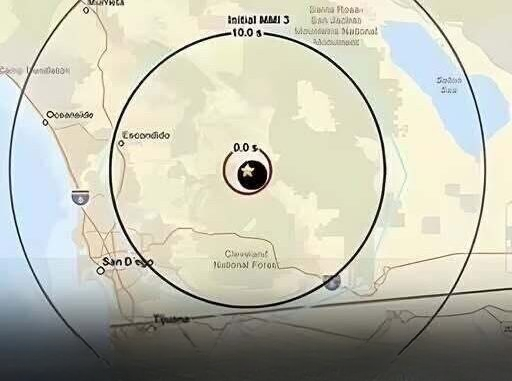Late Monday night, a 5.2-magnitude earthquake struck near Julian, California, sending tremors through parts of San Diego and reaching as far as Los Angeles, roughly 120 miles away. The quake caused brief panic among residents but, fortunately, resulted in no reported injuries or significant property damage.
San Diego County authorities confirmed that the earthquake’s epicenter was located in the rural area surrounding Julian. Despite its intensity, local emergency services reported that structural damage to buildings, roads, and infrastructure appeared minimal, and no immediate hazards were identified.
The tremor was felt across southern California, prompting widespread reports from residents who described shaking furniture, rattling windows, and a brief but intense rumble. Social media platforms quickly filled with firsthand accounts, with many expressing surprise at the quake reaching metropolitan areas so far from the epicenter.
In Los Angeles, 120 miles from Julian, residents reported feeling the ground sway and hanging objects oscillate. While the tremor caused concern, authorities emphasized that the earthquake’s magnitude was moderate and unlikely to cause significant structural harm in urban areas far from the epicenter.
The San Diego County Sheriff’s Department confirmed that no injuries had been reported as of early Tuesday morning. First responders conducted rapid assessments in Julian and surrounding communities, ensuring public safety and checking for potential hazards like rockslides or gas leaks.
A rare early alert was issued to residents approximately five seconds before the quake struck, giving people a brief warning to take cover. Many credited this alert system for helping reduce panic and allowing individuals to brace themselves, highlighting the importance of emergency notification systems in earthquake-prone regions.
Seismologists noted that the 5.2 magnitude places this event in the moderate category. While such quakes can cause localized damage, the relatively rural epicenter and depth helped minimize the impact. Experts confirmed that aftershocks were possible in the hours and days following the initial tremor.
Officials advised residents to remain vigilant and prepared for potential aftershocks. Guidelines included checking gas lines, securing heavy furniture, and having an emergency plan ready. Local emergency management teams also reminded the public to review earthquake safety procedures.
Despite the initial shock, the earthquake served as a reminder of southern California’s seismic activity and the importance of readiness. Residents in both San Diego and Los Angeles are encouraged to have earthquake kits and emergency contact plans in place.
Community members described a mixture of alarm and relief after realizing the quake caused no injuries. Schools and local businesses were briefly disrupted, but normal operations resumed quickly as authorities confirmed there were no ongoing risks.
Scientists continue to monitor seismic activity in the region, analyzing the quake’s impact on fault lines and assessing any potential connections to other minor tremors in southern California over recent months. This data helps improve forecasting and preparedness measures.
Overall, the 5.2-magnitude earthquake near Julian was a significant seismic event felt over a wide area but largely without incident. Residents are reminded that preparedness is key, and early warning systems can play a vital role in minimizing injury and panic during unexpected earthquakes.
